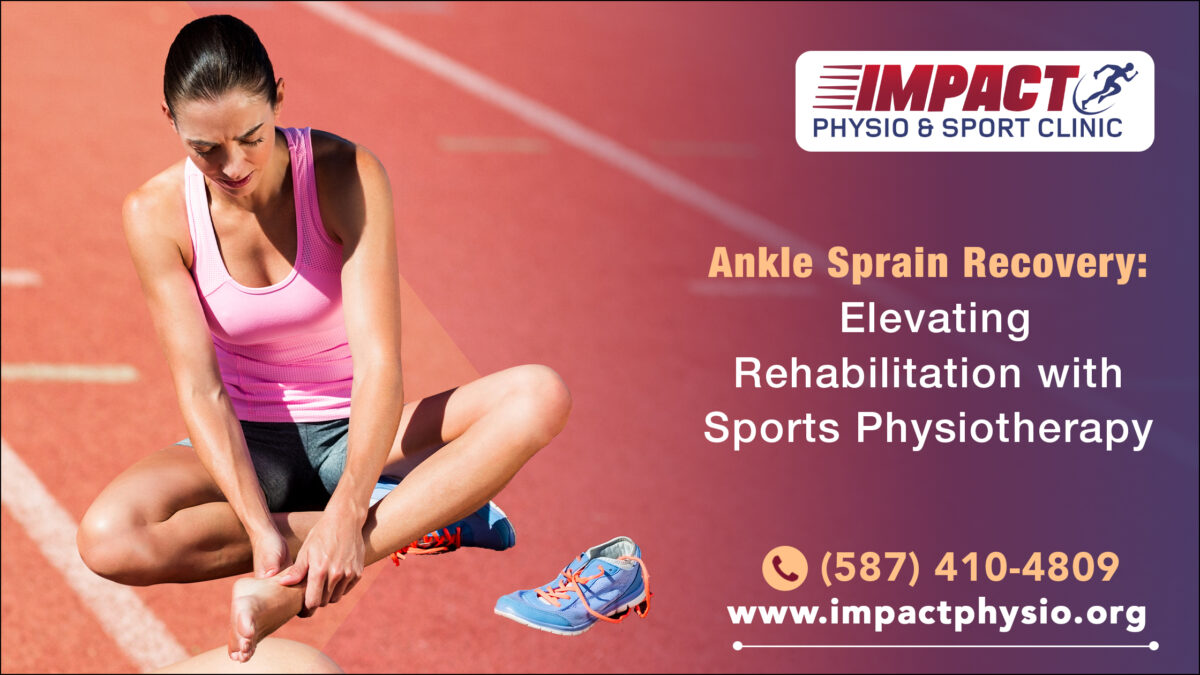An ankle sprain, one of the most common injuries encountered in the athletic world, can significantly impede an athlete’s performance and mobility. The way to recovery requires more than just time; it necessitates a strategic and focused rehabilitation plan. Utilizing a blend of manual therapy techniques, tailored exercise programs, and cutting-edge modalities, sports physiotherapy in Beaumont offers a comprehensive approach to physical therapy for an ankle sprain. This specialized treatment accelerates healing and equips individuals with the knowledge and skills needed to prevent future injuries.
Understanding Ankle Sprains
Classification and Implications
An ankle sprain happens when ligaments that support the ankle are forced beyond their normal limit, resulting in tears. These injuries are classified from mild (Grade 1) disruptions to severe (Grade 3) tears, each requiring a tailored approach to rehabilitation.
Identifying the Symptoms
Symptoms include pain, which may vary according to the injury’s severity, swelling, bruising, and a reduced effort to bear weight or move the ankle freely. Proper and accurate diagnosis is key to effective treatment.
Sports Physiotherapy’s Structured Rehabilitation Phases
The rehabilitation of an ankle sprain is methodically divided into phases, from initial injury management to full functional recovery. Each phase is crucial and builds upon the progress made in the previous stage.
Immediate Care: Pain and Swelling Management
Cryotherapy
Applying ice to diminish swelling and alleviate pain.
Application: Ice packs or cold therapy units are applied to the injured area for 15-20 minutes every 2-3 hours during the first 48-72 hours post-injury. To reduce metabolic activity in the injured area, minimize tissue damage and swelling, and provide pain relief.
Compression and Elevation
It decreases swelling and encourages fluid drainage, hastening the healing process.
Application: A compression bandage is wrapped from the toes to the mid-calf, and the injured leg is elevated above heart level. To assist in controlling swelling and encouraging venous return, speeding up the removal of waste products from the injured site.
Mid-Stage Recovery: Mobility and Strength Restoration
Range of Motion Exercises
Designed to restore movement gradually within the pain-free capacity.
Ankle Alphabet: The patient “draws” the alphabet in the air with their toes, moving the ankle through its full range of motion. This gently increases mobility and circulates blood to the injured tissues without bearing weight.
Strengthening Exercises
These exercises focus on rebuilding the strength of the ankle and surrounding musculature to support the joint and prevent future injuries.
Isometric Exercises: Pushing the foot against an immovable object, such as a wall, without moving the ankle, held for 10 seconds, repeated several times.
Theraband Exercises: A resistance band around the foot provides resistance as the ankle moves through dorsiflexion, plantarflexion, inversion, and eversion.
Late-Stage Rehabilitation: Functionality and Prevention
Proprioceptive Training
Essential for regaining balance and coordination, these exercises retrain the ankle to respond to varying stability challenges.
Single-Leg Balance: Standing on one leg, possibly on an unstable surface like a foam pad, for increasing periods.
Functional Training
Tailored activities that replicate sport-specific movements or daily tasks to ensure a confident and safe return to activity.
Hopping and Jumping Drills: Mimicking sport-specific movements or daily activities that require dynamic ankle stability. To ensure the ankle can withstand the stresses of real-life activities and sports, preventing re-injury.
Accelerated Recovery Strategies
Progressive Overload Principle
This approach carefully increases exercise intensity to rebuild the ankle’s strength and flexibility without overstraining the healing tissues.
Application: Gradually increase the weight, repetitions, or duration of exercises as strength and mobility improve.
Manual Therapy Techniques
Incorporates hands-on treatments like massage and joint mobilization to relieve pain, enhance blood flow, and improve movement in the ankle joint.
Massage: Soft tissue manipulation around the injured area reduces scar tissue and promotes blood flow.
Joint Mobilization: A therapist performs gentle movements of the ankle joint to improve joint function and range of motion.
The transition through these phases depends on individual progress, which is closely monitored by sports physiotherapists. The goal is not just to heal the ankle sprain but to return the individual to their pre-injury levels of activity, strength, and confidence, with a minimized risk of re-injury.
Supportive Devices in Rehabilitation
Bracing and Taping
Bracing and taping are temporary aids used to stabilize the injured ankle. They can also enhance proprioceptive feedback from the ankle, improving awareness of ankle position and movement. This is crucial for preventing awkward movements that could lead to sprains.
Bracing
Ankle braces come in various designs, from rigid braces offering maximum support to flexible ones allowing more movement. The choice of brace depends on the severity of the sprain and the rehabilitation phase. Rigid braces are often used in the early stages of recovery, while more flexible options are introduced as healing progresses.
Taping
Sports physiotherapists often use athletic tape to support the ankle. Taping techniques can be customized to the specific needs of the injury, providing targeted support to the affected ligaments. Unlike braces, tape is applied directly to the skin, offering a more contoured fit that can be particularly useful during physical activity.
Custom Orthotics
Custom orthotics are specialized devices designed to fit inside footwear. They correct biomechanical foot issues and distribute foot pressure more evenly. They are particularly beneficial for persons with structural imbalances or those with a history of ankle sprains, as these factors can contribute to the recurrence of injuries.
Achieving Optimal Recovery
In wrapping up the discussion on ankle sprain recovery, sports physiotherapy plays a pivotal role in healing and significantly enhancing the rehabilitation journey for athletes. Impact Physiotherapy in Beaumont delivers personalized care to individuals with ankle sprain complications through sports injury physiotherapy, including specialized ankle sprain physiotherapy.
Connecting with a sports physiotherapist becomes crucial for those seeking a “sports physiotherapist near me,” looking for an effective recovery path, and minimizing their downtime from sports.
Embarking on a rehabilitation journey with sports physiotherapy in Beaumont signifies a proactive step toward overcoming the immediate challenges of an ankle sprain. Contact us today to begin a tailored recovery process prioritizing your athletic goals and well-being.


